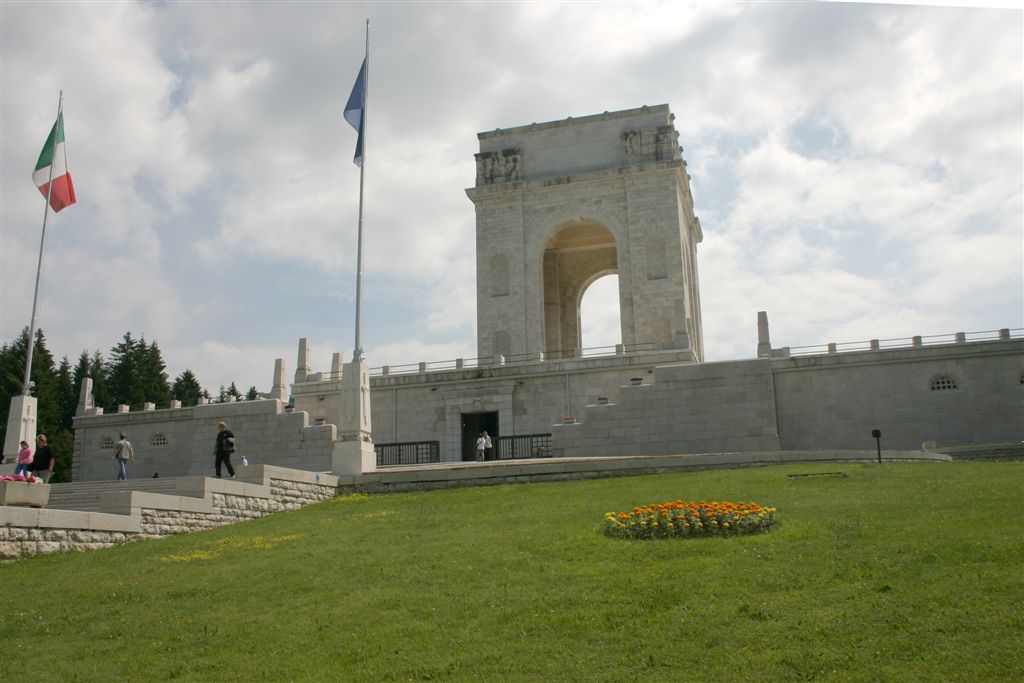 LEITEN WAR MEMORIAL - Asiago
LEITEN WAR MEMORIAL - Asiago
From Tuesday to Saturday: 9.00-12.00 / 14.00-17.00.
Close on: Monday, January 1, Easter, Easter Monday, May 1, August 15, September 21, December 25
Free admission
 MUSEUM "BATTAGLIA DEI TRE MONTI" - Asiago
MUSEUM "BATTAGLIA DEI TRE MONTI" - Asiago
Visits on telephone booking: 0424 690018
Free donation
Museo Battaglia dei tre Monti
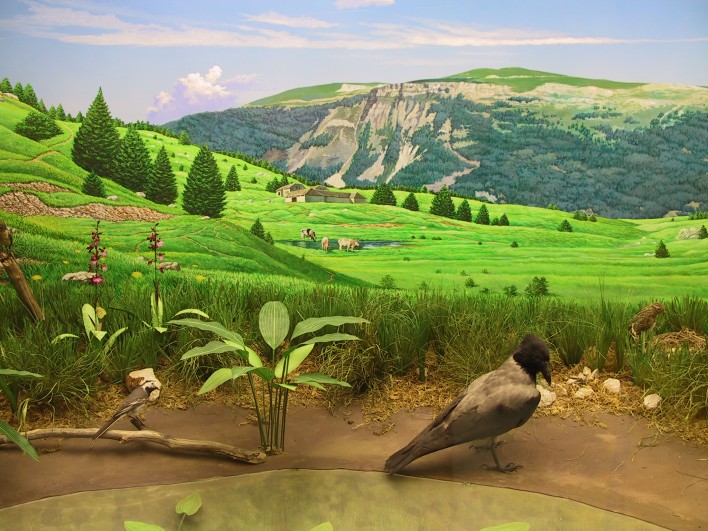 MUSEUM DEDICATED TO THE NATURE OF THE ALTOPIANO "Patrizio Rigoni" - Asiago
MUSEUM DEDICATED TO THE NATURE OF THE ALTOPIANO "Patrizio Rigoni" - Asiago
Visits on booking: 0424.460124
Admission: 2,50/3,50 euros
Museo Naturalistico Didattico
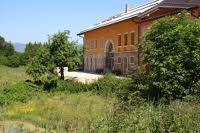 MUSEUM OF THE WATER - Asiago
MUSEUM OF THE WATER - Asiago
Open in summertime. In other periods on telephone booking: 0424.463170.
Admission: 2,00/3,00 Euros Museo dell'Acqua
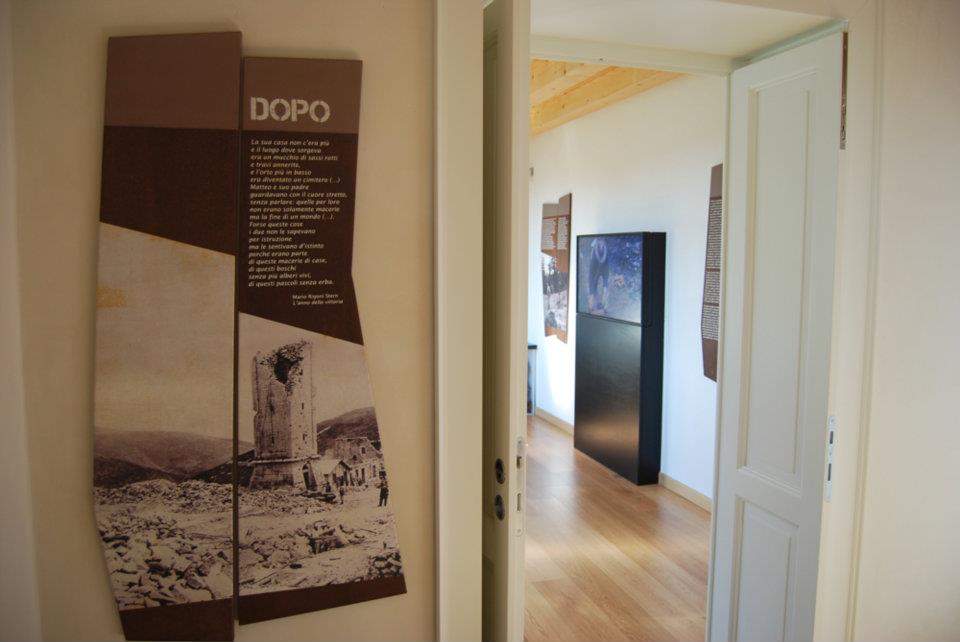 ETHNOGRAPHIC , WAR AND IMMIGRATION MUSEUM OF FOZA - Foza
ETHNOGRAPHIC , WAR AND IMMIGRATION MUSEUM OF FOZA - Foza
Open in summertime In other periods on telephone booking: 0424.698003
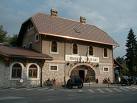 WAR MUSEUM 1915-1918 - Canove of Roana
WAR MUSEUM 1915-1918 - Canove of Roana
July and August: Everyday: 9.30-12.00 e 15.00-18.30
Other period and times by booking: 0424 692511.
Admission: 3,00 euro; Reduced ticket: 2,00 euro
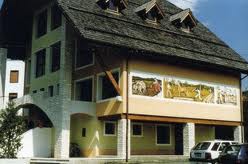 CIMBRIAN CULTURAL INSTITUTE - Roana
CIMBRIAN CULTURAL INSTITUTE - Roana
Open in summertime.In other periods: visits by booking: 0424 66047.
Free admission
 TYPICAL WHISTLE MUSEUM - Cesuna of Roana
TYPICAL WHISTLE MUSEUM - Cesuna of Roana
from july to september: every day 10 - 12/15.30-19. In other periods only saturday and sunday: 10 - 12/14.30 - 18. In other days only on booking. Free donation - Tel. 0424.694283
Museo dei Cuchi
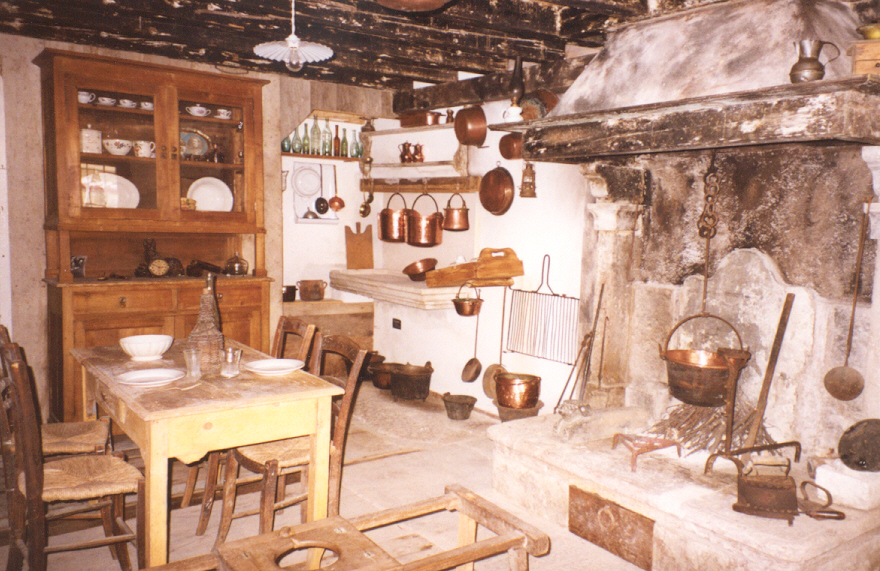 MUSEUM DEDICATED TO THE TRADITIONS OF THE INHABITANTS OF LUSIANA - Lusiana
MUSEUM DEDICATED TO THE TRADITIONS OF THE INHABITANTS OF LUSIANA - Lusiana
Open in summertime. In other periods on telephone booking: 0424.407264
Paid admission - Museo Diffuso di Lusiana
 PREHISTORIC VILLAGE OF MONTE CORGNON - Lusiana
PREHISTORIC VILLAGE OF MONTE CORGNON - Lusiana
Paid admission - Museo Diffuso di Lusiana
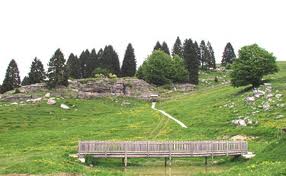 MONTE CORNO ALPINE GARDEN - Lusiana
MONTE CORNO ALPINE GARDEN - Lusiana
From 21st June to 15th August, only Sundays & Saturdays: 10.00-17.00
Paid admission
Museo Diffuso di Lusiana
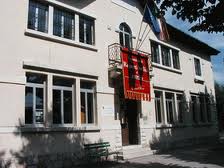 ROVINI COLLECTION - Tresche' Conca
ROVINI COLLECTION - Tresche' Conca
Open from June to September: 9.30-12.00 16.00-19.00
www.collezionerovini.it
Asiago 7 Comuni is easy to reach from all of Italy and Europe. The plateau is in the north of the Veneto region, between the Dolomites and the Adriatic Sea, in the centre of Europe and close to the Brennero and Tarvisio, as well as Milan, Genoa or Bologna.
MAIN ROAD CONNECTIONS
-from the Autostrada A4 Serenissima, at Vicenza Est take the Autostrada Valdastico A31 until the Piovene Rocchette exit; here take the Strada Statale del Costo , enter Tresche Conca di Roana.
-from Trento, passing through Lavarone and the Piana Vezzena, enter Camporovere di Roana.
-from Bassano del Grappa, go up to Conco; or Foza passing through Valstagna; or Enego, passing through Primolano.
-from Marostica, go up to Lusiana.
-from Arsiero, go up to Rotzo passing through Pedescala.
RAILWAY
-from Milan or Venice arrive at Vicenza, and connect to Thiene.
-from Venice arrive at Primolano
BUS
-from Vicenza, Padua, Thiene and Bassano del Grappa there are numerous connections 365 days of the year.
-from Milan, via Autostrada in high season.
AIRPORTS
-Asiago "Romeo Sartori" (only tourist flights)
-Venezia "Marco Polo" - 120 km
-Verona "Villa franca" - 105 km
DISTANCE FROM MAIN CITIES
| VENICE |
95 km |
| VICENZA |
50 km |
| PADUA |
64 km |
| VERONA |
110 km |
| TRIESTE |
250 km |
| TARVISIO |
320 km |
| BRENNERO |
190 km |
| TRENTO |
55 km |
| MILAN |
245 km |
| TURIN |
389 km |
| GENOVA |
375 km |
| BOLOGNA |
200 km |
| FLORENCE |
290 km |
| ROME |
575 km |
| MUNICH |
380 km |
| DUSSELDORF |
935 km |
| VIENNA |
720 km |
In May 1915 the First World War broke out, a large-scale conflict that also directly involved the Asiago Plateau as it became the centre of some of the most bloody and contested battles on the Italian front.
Even after 80 years, the traces of this terrible conflict are still evident: remains of trenches, hideouts, logistical centres, water plant remains, cableway stations, military cemeteries, headstones and monuments that remind us of the soldiers that fell on the Plateau.
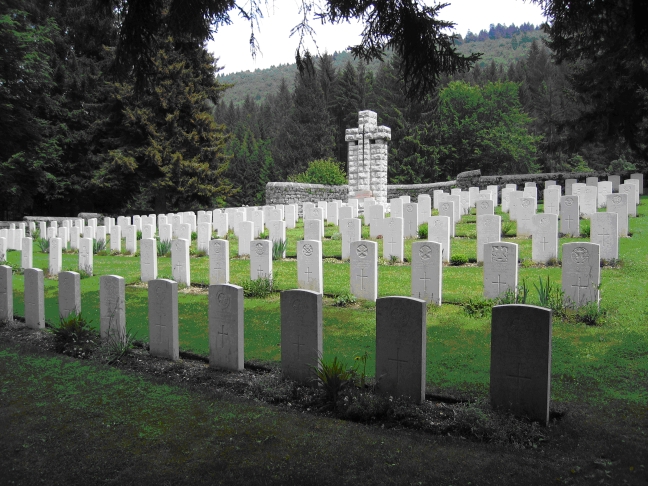 THE ENGLISH CEMETERIES
THE ENGLISH CEMETERIES
On the plateau there are five English cemeteries managed by the "Commonwealth War Graves Commission": Barenthal, Granezza, Cavalletto, Magnaboschi, Boscon.

THE ASTRONOMICAL OBSERVATORY
It is the most important centre for astronomic research in Italy. It is 2 km from the centre of Asiago in the direction of Pennar. It has a separate site on Cima Eckar where the largest telescope in Italy, and one of the largest in Europe, can be found. For further information
click on the link Osservatorio di Asiago
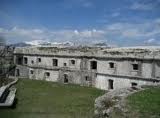 CORBIN FORT AND PLACES OF THE GREAT WAR
CORBIN FORT AND PLACES OF THE GREAT WAR
A work of engineering built on the plateau in the period leading up to the outbreak of the First World War. Indeed, it was started in 1906 and is currently an excellent example of a typical First World War fort on high ground. It was built on a jutted cliff so as to close the valley below. The intricate and refined structure that is still highly visible are an excellent example of what the period’s military engineering could create. A year after the beginning of the conflict, the lack of medium calibres in the advanced area meant that some of Fort Corbin’s best pieces were removed, to the extent that tree trunks were set up in the domes to make the enemy believe that the fort was fully functional. On the 15th May 1916 large shells (first 380mm and then 480mm) fell on the Fort. Following a period in the hands of the Austrians, after the Strafexpedition, for several years the Fort was used for military training living quarters. The State then sold it to its current owner, Severino Panozzo. The fort is already an established tourist attraction and this year it has something new to offer: solar panel lighting of the two powder deposits, both well preserved, the work of the owner’s eighteen year old son, Federico Panozzo. At night a multi-colour light, clearly visible from the Arsiero area, lights up the Corbin Fort. To get to the Fort, from the parish church of Tresche Conca, follow the road towards Malga Rocchetto for 5-6kms.
THE HISTORY OF THE PIOVENE-ROCCHETTE/ASIAGO RAILWAY LINE
Up to the middle of the 19th century, the tableland of the seven municipalities was only linked to the valley by a cart track that made its way up to Cogollo del Cengio and by three stairways: the Calà del Sasso (4444 steps), the Piovega di Sopra (4480) and the Piovega di Sotto (5680), which acted as links with the Valsugana, Enego and Primolano.
To overcome the lack of adequate links with the valley, obliging the tableland to put up with counter-productive isolation, especially in the winter, in 1882 the wool industrialist, Alessandro Rossi proposed a rail link with the valley, charging the engineer Alfonso Crippa the with task of giving concrete form to the idea.
The first project (Arsiero via Pedelasca, Castelletto, Roana, Canove and arrival in Asiago after 32.35 km of track) was abandoned because of the length of the route and the high cost of the work.
Alessandro Rossi then called on the engineer Ferdinando Shacke, an export in mountain railways, who presented the project for the Piovene-Rocchette/Asiago line, 21.19 km long, with 5.76 km of cog railway track. The project was approved on 15/07/1907 and work began immediately afterwards.
On 10/01/1910 the line was officially inaugurated, thus ending the long isolation of the tableland. A fundamental role was played by the train during the two world wars, as it allowed troops and arms to be transported, but also the moving of evacuees.
In 1958 the definitive closure of the railway service was decreed, due to high management costs and competition from the "SITA" bus service. Subsequently, the whole track was dismantled and the locomotives were demolished; only the level-crossing lodges and the stations remained standing, with the exception of Cesuna station, which was knocked down.After 48 years this was thus the end of a praiseworthy service of very high social value, managed with skill and sacrifice by all staff of the railway.
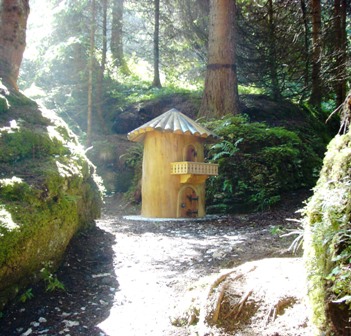 THE VILLAGE OF THE GNOMES
THE VILLAGE OF THE GNOMES
It is a magic place situated int the wonderful park of about 90.000 square metres of the Hotel Da Barba.In a pure environment and enchanting atmosphere, there is a path among the spruce forests and pastures.While walking one can meet a small lake, a wooden bridge, little houses among the trees, short falls of water and ...maybe a gnome!
SPRING/SUMMER
Mountain-bike - Trekking - Orienteering - Golf - Minigolf - Grass skiing - Bungee Jumping - Roller Ski – Health Trails- Archery - Agility Forest - AcroPark - Fishing - Bowling - Track and Field Sports - Trap - shooting
AUTUMN / WINTER
Cross Country Skiing – Downhill Skiing- Snow-board – Ski Trips - Telemark – Ice Rallying – Ski Jumping - – Snow Show walks – Ski Schools – Artificial Snow
ALL YEAR ROUND
Horse riding- Ice Skating – Ice Hockey – Air Gliding – Hang Gliding- Free climbing – Rock Climbing – Target Shooting - Swimming- Tennis - Football- Basketball- Volleyball- Body building – Aerobics – Martial Arts
NOT FORGETTING...
Cinemas - Museums - Discos - Pubs – Games Rooms - Shows - Competitions - Exhibitions - Contests - Festivals
 LEITEN WAR MEMORIAL - Asiago
LEITEN WAR MEMORIAL - Asiago MUSEUM "BATTAGLIA DEI TRE MONTI" - Asiago
MUSEUM "BATTAGLIA DEI TRE MONTI" - Asiago MUSEUM DEDICATED TO THE NATURE OF THE ALTOPIANO "Patrizio Rigoni" - Asiago
MUSEUM DEDICATED TO THE NATURE OF THE ALTOPIANO "Patrizio Rigoni" - Asiago MUSEUM OF THE WATER - Asiago
MUSEUM OF THE WATER - Asiago ETHNOGRAPHIC , WAR AND IMMIGRATION MUSEUM OF FOZA - Foza
ETHNOGRAPHIC , WAR AND IMMIGRATION MUSEUM OF FOZA - Foza WAR MUSEUM 1915-1918 - Canove of Roana
WAR MUSEUM 1915-1918 - Canove of Roana CIMBRIAN CULTURAL INSTITUTE - Roana
CIMBRIAN CULTURAL INSTITUTE - Roana TYPICAL WHISTLE MUSEUM - Cesuna of Roana
TYPICAL WHISTLE MUSEUM - Cesuna of Roana MUSEUM DEDICATED TO THE TRADITIONS OF THE INHABITANTS OF LUSIANA - Lusiana
MUSEUM DEDICATED TO THE TRADITIONS OF THE INHABITANTS OF LUSIANA - Lusiana PREHISTORIC VILLAGE OF MONTE CORGNON - Lusiana
PREHISTORIC VILLAGE OF MONTE CORGNON - Lusiana MONTE CORNO ALPINE GARDEN - Lusiana
MONTE CORNO ALPINE GARDEN - Lusiana ROVINI COLLECTION - Tresche' Conca
ROVINI COLLECTION - Tresche' Conca



 THE ENGLISH CEMETERIES
THE ENGLISH CEMETERIES
 CORBIN FORT AND PLACES OF THE GREAT WAR
CORBIN FORT AND PLACES OF THE GREAT WAR THE VILLAGE OF THE GNOMES
THE VILLAGE OF THE GNOMES


